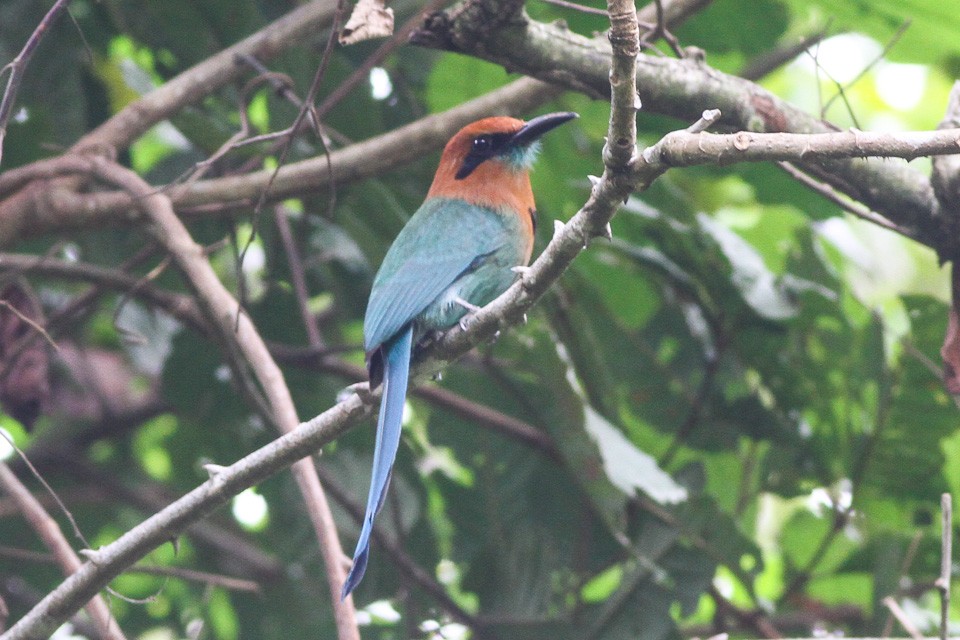Broad-billed Motmot
A species of Broad-billed and Keel-billed Motmots Scientific name : Electron platyrhynchum Genus : Broad-billed and Keel-billed Motmots
Broad-billed Motmot, A species of Broad-billed and Keel-billed Motmots
Botanical name: Electron platyrhynchum
Genus: Broad-billed and Keel-billed Motmots
Content
Description General Info
Description
At about 12 inches long, the broad-billed motmot is one of the smallest members of the family Momotidae. These birds weigh 60 grams on average. They have dark eyes and feet. Most of its upper body, including its head, neck and chest, is a cinnamon-rufous colour. There is a black patch on either side of its head that covers the cheeks and auricular area, as well as one on the centre of its chest. The lower half of its body is more greenish above and becomes more blueish below. The broad-billed motmot has a long tail that gradually changes from blue to black. It also has two racquet-shaped central feathers are much longer than the rest. As its name suggests, the broad-billed motmot has a broad, flattened bill. Its bill is black, has serrated edges, and has a keel on the upper mandible. This species does not demonstrate sexual dimorphism, which means that both the male and female look alike. Juveniles of this species are duller and darker than the adults. They also have white on their bill and a blue-green streak over their eye. The broad-billed motmot looks nearly identical to the rufous motmot (Baryphthengus martii) but it has a few discerning characteristics. It is smaller and has a larger black patch compared to the rufous motmot, as well as a blue-green chin. 
Size
39 cm
Nest Placement
Cavity
Feeding Habits
Broad-billed Motmot primarily consumes insects, their larvae, spiders, scorpions, and centipedes. It also feeds on small vertebrates like frogs, lizards, and snakes, and supplements its diet with fruit. Its feeding behavior includes foraging from a perch and snatching prey with precision. Broad-billed Motmot showcases specialized hunting techniques and a diverse palate.
Habitat
The broad-billed Motmot predominantly resides in humid forests and older second-growth woodlands within tropical regions. It is often found in both lowland areas and foothill regions, extending up to elevations of 1100 meters. The bird favors dense, moisture-rich environments which offer ample foraging opportunities and nesting sites. These habitats are typically broadleaf forests that can provide the microhabitats necessary for the species' survival and reproduction.
Dite type
Insectivorous
General Info
Feeding Habits
Bird food type
Distribution Area
Its range encompasses the eastern side of Central America from Honduras to Panama, and it extends into many countries in North-Western South America, including Colombia, Ecuador, Peru, Bolivia, and Brazil. This bird resides in humid forests, warm lowlands and foothills, and is found at elevations below 3000 feet. 
Species Status
Not globally threatened.
